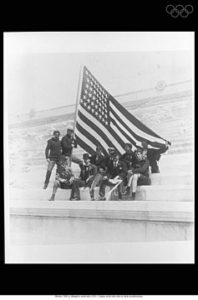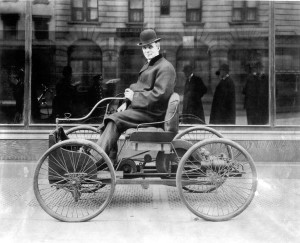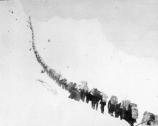
Utah State Flag
Utah became the forty-fifth state of the United States in 1896. The state capital is Salt Lake City, and its state nickname is the Beehive State. It is the thirteenth largest state, and it ranks 30th in population compared to other states. Utah’s Great Salt Lake, located in the northern part of the state, is really the remnant of an inland sea. Because its waters do not drain into another body of water, the lake is becoming saltier and saltier. Children can visit an Internet site at: Utah. Idea: Let’s make a connection regarding the Great Salt Lake. Items float with more ease in salt water than in fresh water. Fill one container with fresh water, and fill another container with salt water. Try floating various objects. Record the results.


